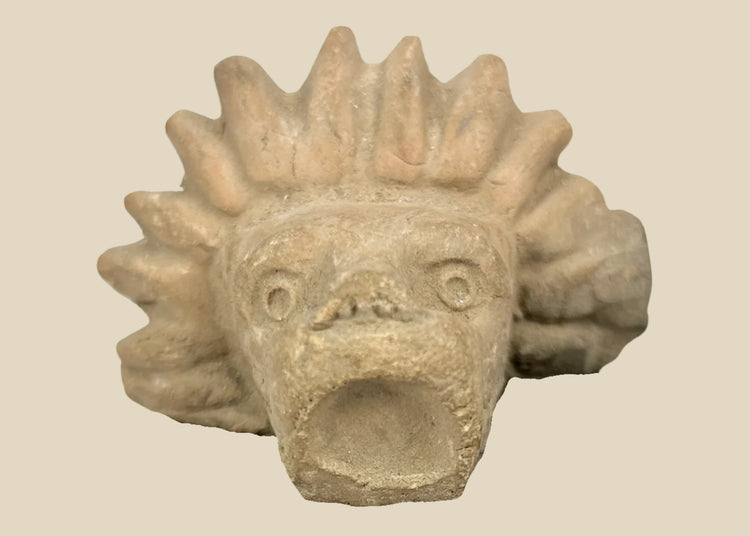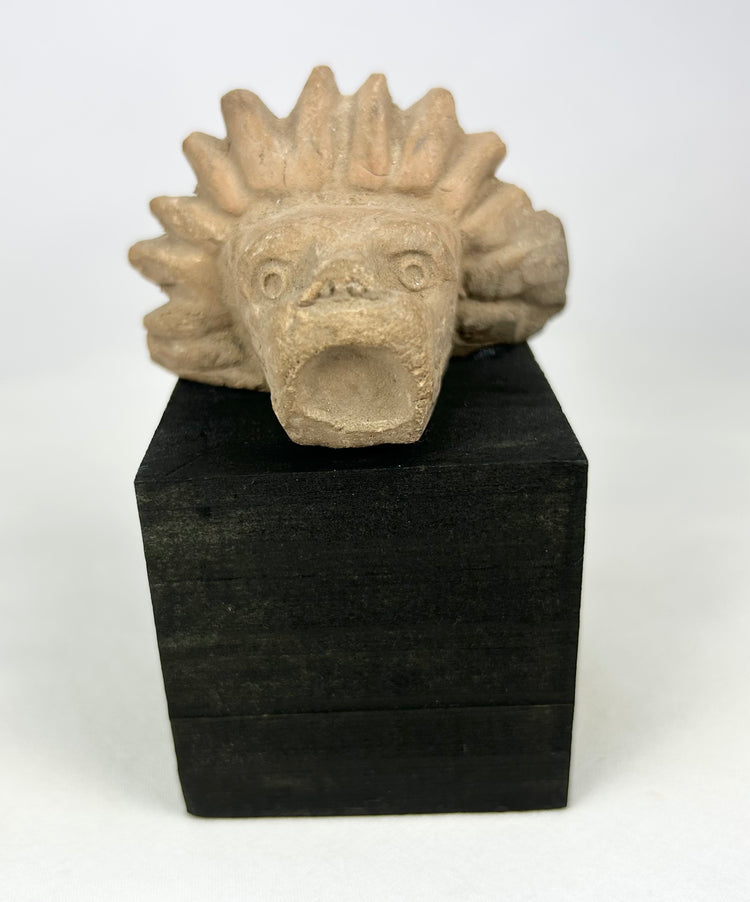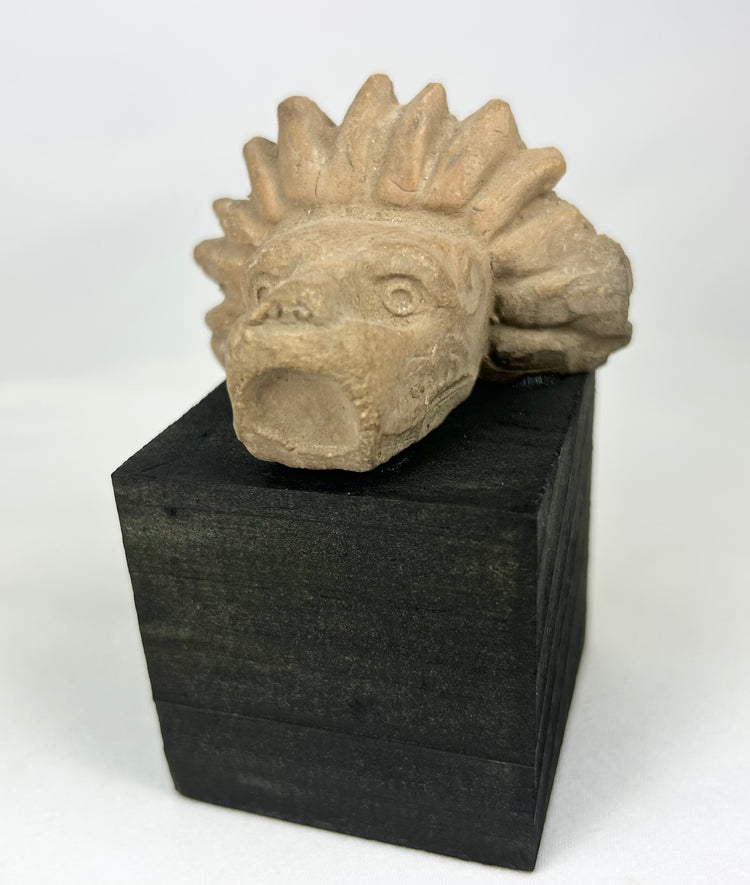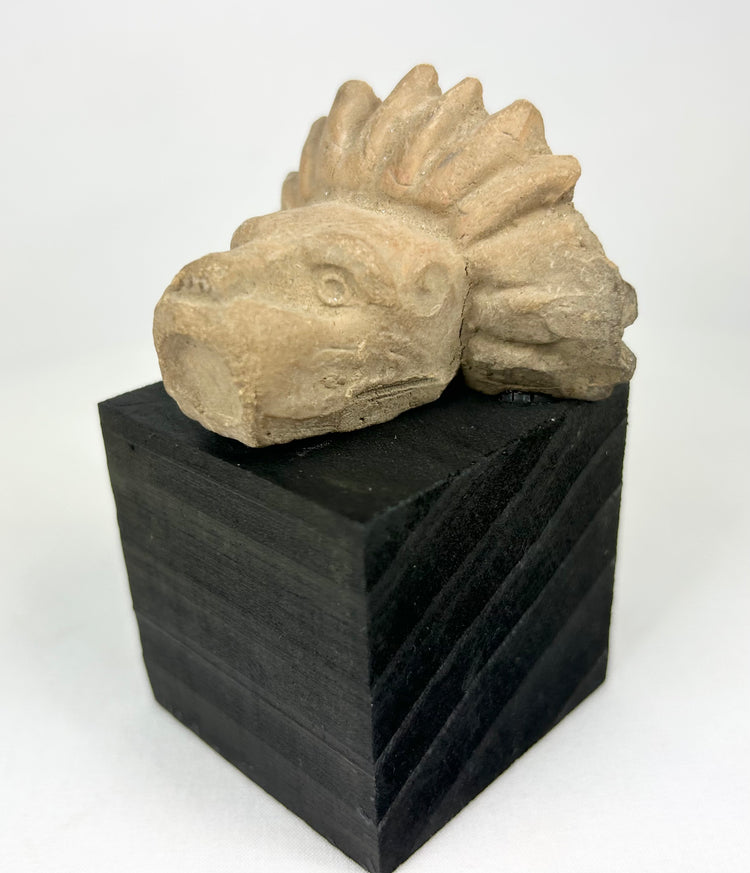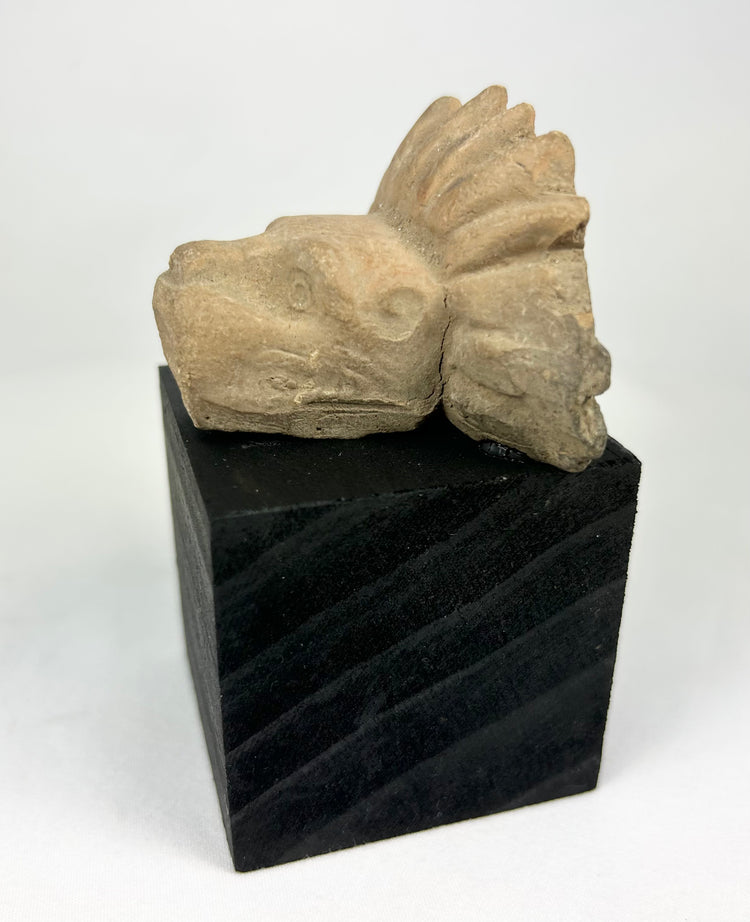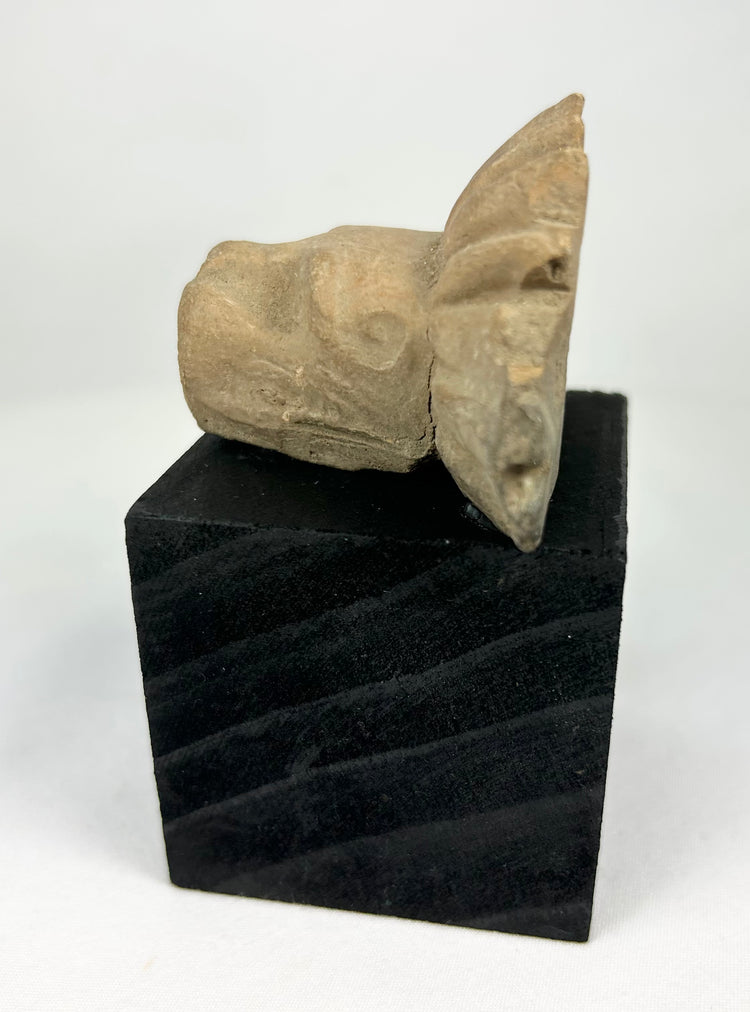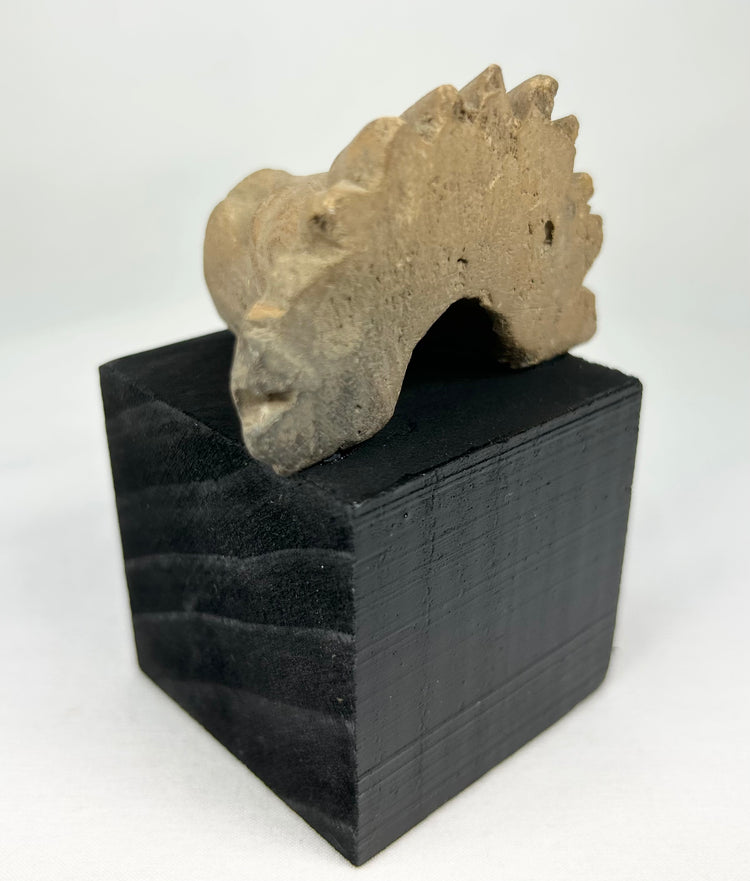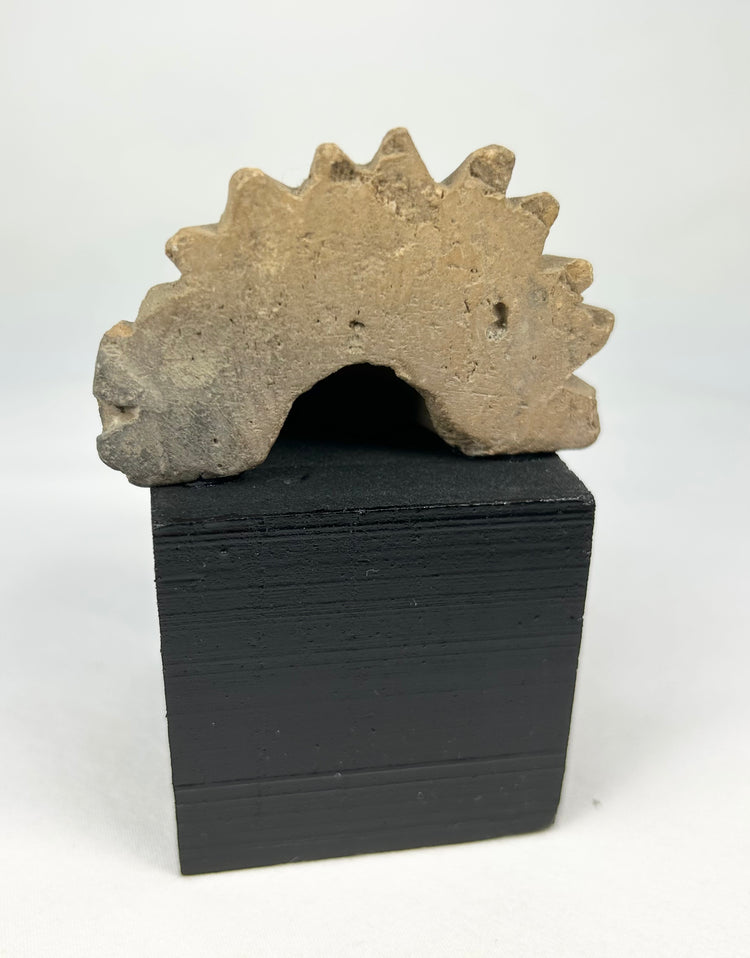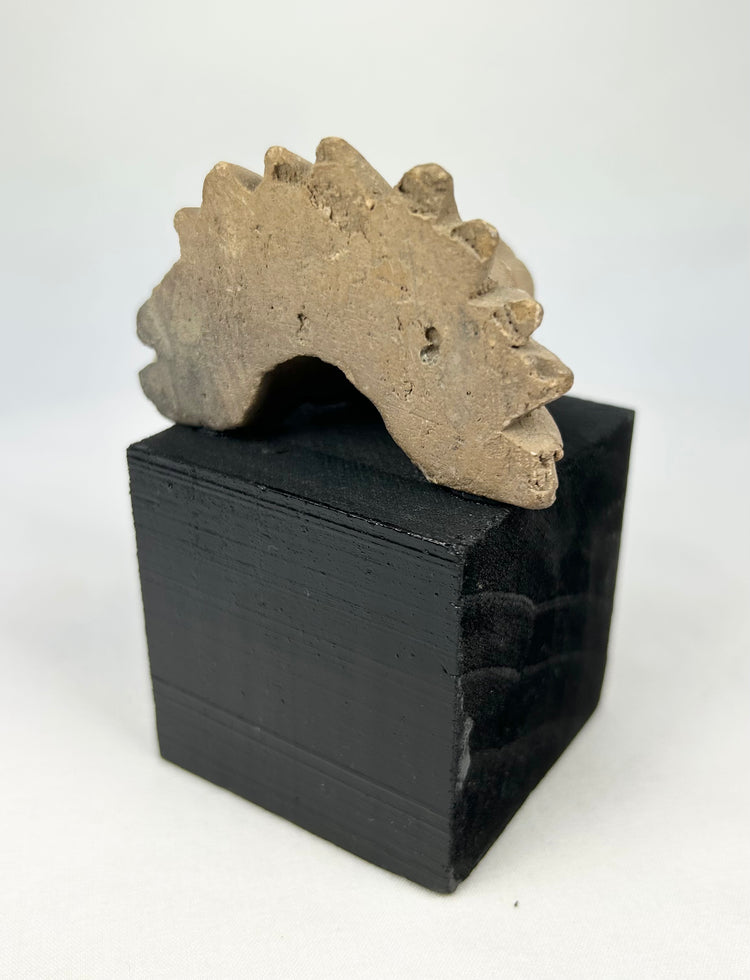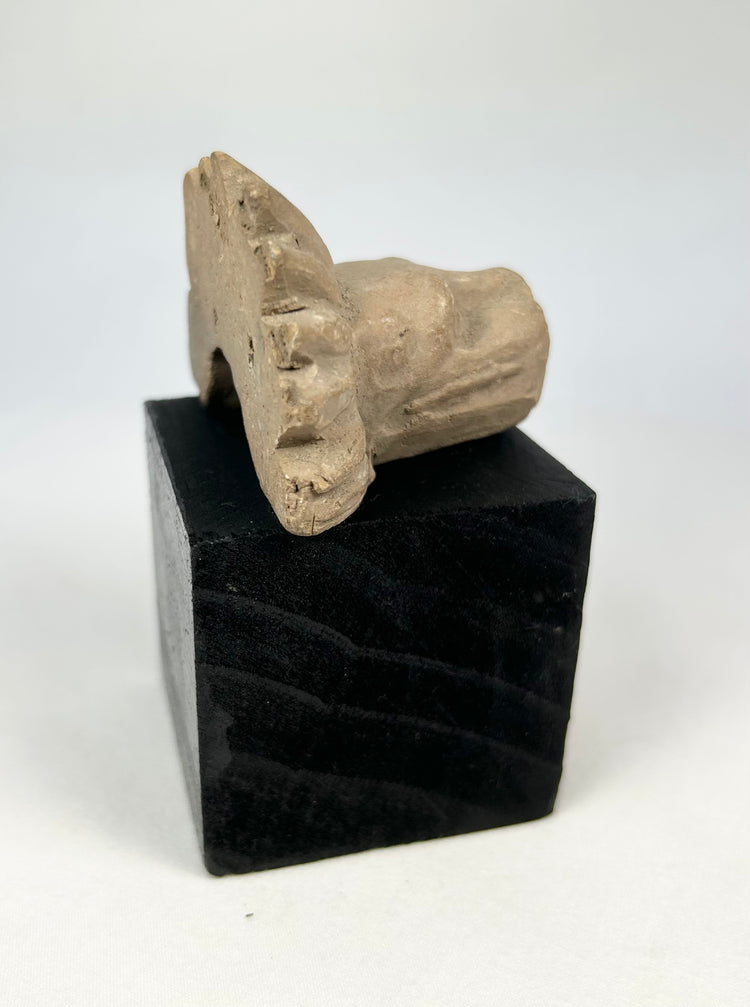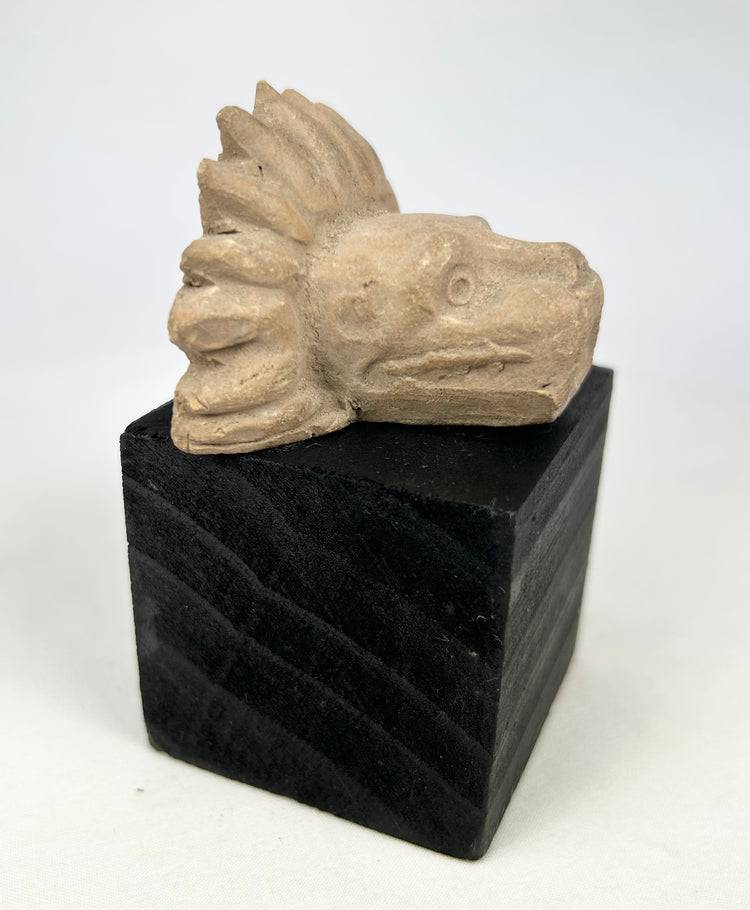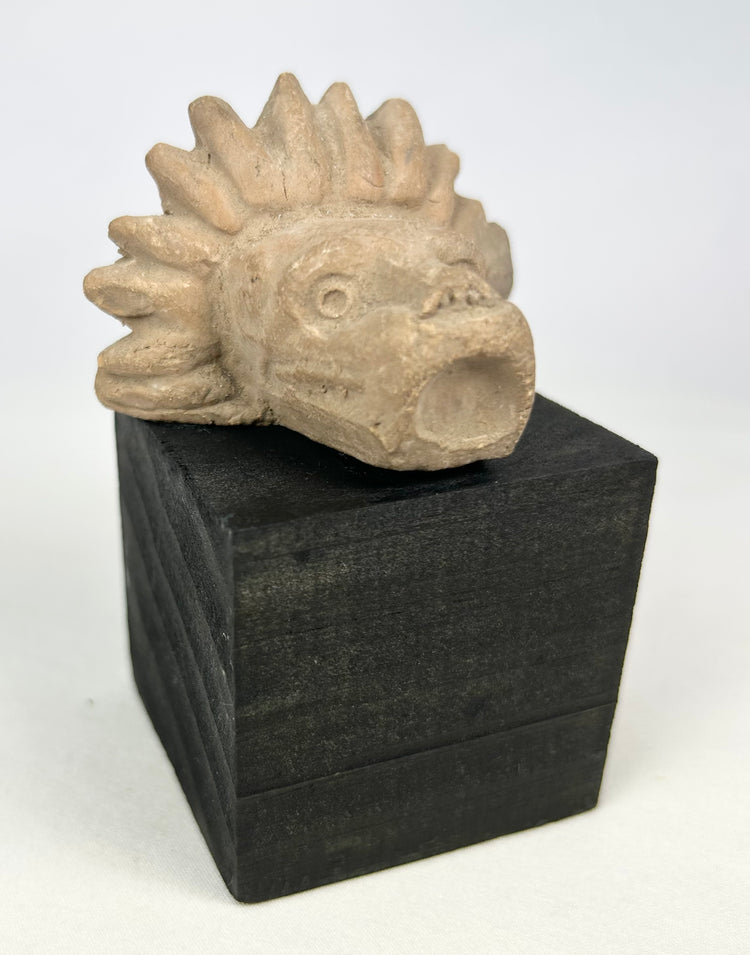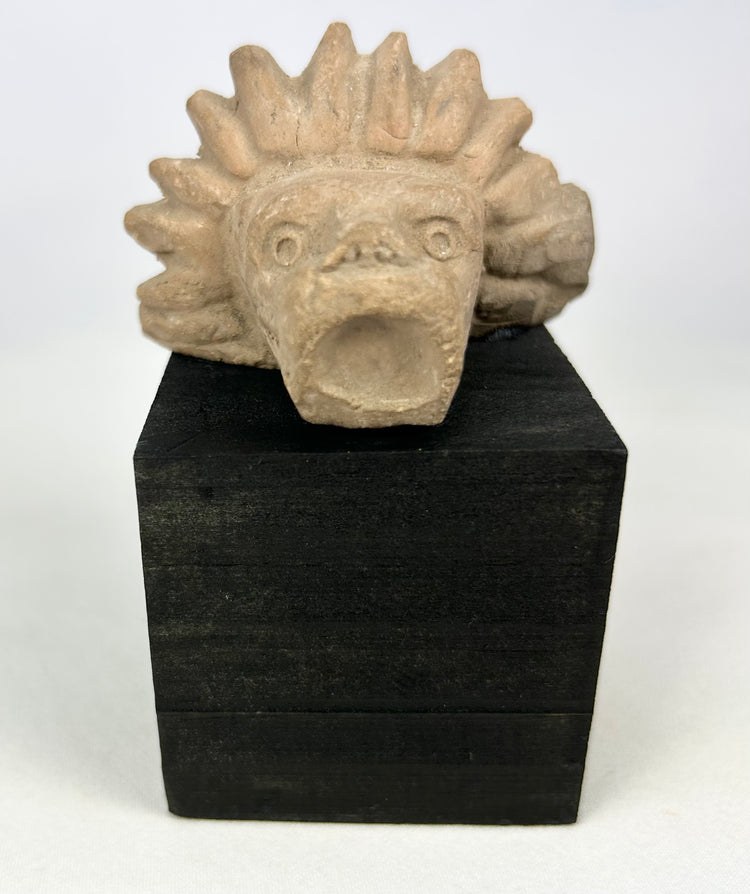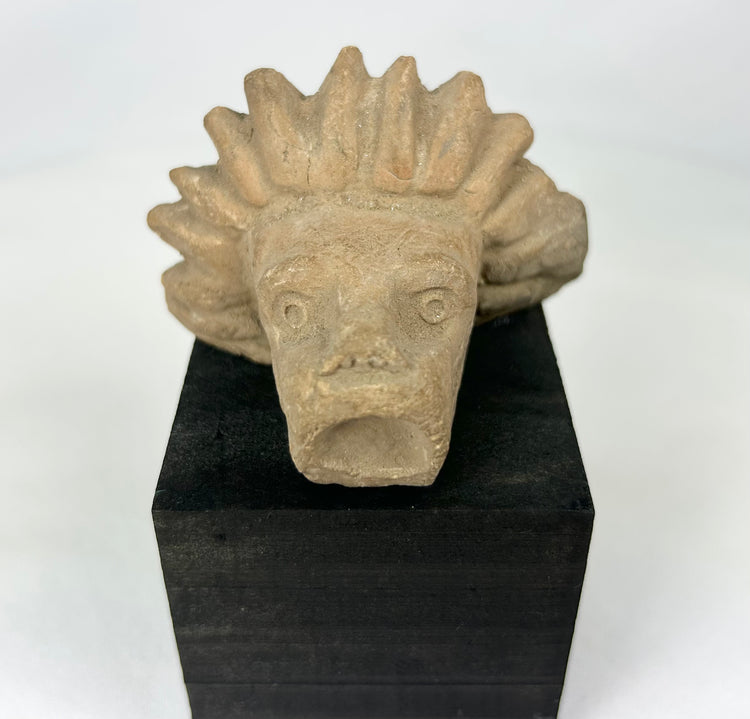Pre-Columbian Stone Animal Head Fragment | Mesoamerican | 900–1500 CE
Description
More
Less
Historical Context & Origin
Region: Mesoamerica (possibly Aztec or Mayan influence)
Material: Carved stone (likely limestone or volcanic stone)
Period: Pre-Columbian, circa 900–1500 CE
Description
This finely carved stone fragment depicts the head of a fierce animal, its open mouth and radiating mane or spiked crest suggesting a guardian beast such as a jaguar or lion-like deity. The stylized carving emphasizes strength and protective power, central themes in Mesoamerican art and spirituality. Though once part of a larger architectural or ritual piece, the fragment retains strong detail in the muzzle, eyes, and crest. Now mounted on a custom black display base, it presents as both an archaeological artifact and a striking sculptural fragment.
Features
- Carved stone head fragment with radiating mane or crest
- Open-mouthed expression symbolizing ferocity and guardianship
- Likely part of a larger architectural or ceremonial sculpture
- Mounted on a black display base for preservation and exhibition
Cultural Significance
In Mesoamerican cultures, the jaguar was revered as a powerful symbol of divine strength, the underworld, and protection. Sculpted heads such as this often adorned temples and shrines, embodying guardian forces that safeguarded sacred spaces. These carvings reflect both the artistic achievements and the deeply spiritual worldview of Pre-Columbian societies. Today, such fragments are highly valued for their bold design, cultural resonance, and direct connection to ancient ceremonial architecture.
Condition
Fragmentary but stable, with weathering and surface wear consistent with great age and burial. Securely mounted for display.
Dimensions (approximate)
Height: 3.5 in
Width: 2 in
Depth: 2 in
Age
Circa 900–1500 CE
Description
Historical Context & Origin
Region: Mesoamerica (possibly Aztec or Mayan influence)
Material: Carved stone (likely limestone or volcanic stone)
Period: Pre-Columbian, circa 900–1500 CE
Description
This finely carved stone fragment depicts the head of a fierce animal, its open mouth and radiating mane or spiked crest suggesting a guardian beast such as a jaguar or lion-like deity. The stylized carving emphasizes strength and protective power, central themes in Mesoamerican art and spirituality. Though once part of a larger architectural or ritual piece, the fragment retains strong detail in the muzzle, eyes, and crest. Now mounted on a custom black display base, it presents as both an archaeological artifact and a striking sculptural fragment.
Features
- Carved stone head fragment with radiating mane or crest
- Open-mouthed expression symbolizing ferocity and guardianship
- Likely part of a larger architectural or ceremonial sculpture
- Mounted on a black display base for preservation and exhibition
Cultural Significance
In Mesoamerican cultures, the jaguar was revered as a powerful symbol of divine strength, the underworld, and protection. Sculpted heads such as this often adorned temples and shrines, embodying guardian forces that safeguarded sacred spaces. These carvings reflect both the artistic achievements and the deeply spiritual worldview of Pre-Columbian societies. Today, such fragments are highly valued for their bold design, cultural resonance, and direct connection to ancient ceremonial architecture.
Condition
Fragmentary but stable, with weathering and surface wear consistent with great age and burial. Securely mounted for display.
Dimensions (approximate)
Height: 3.5 in
Width: 2 in
Depth: 2 in
Age
Circa 900–1500 CE
You May Also Like


































